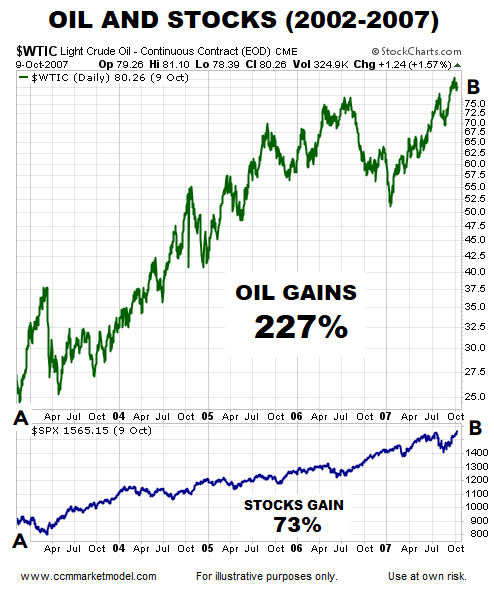CORRECTION OR BEAR MARKET?
The answer to the question is this a normal correction or the start of something much worse will only be revealed over time. However, there are numerous ways to gain a better understanding of the probabilities, including Fibonacci retracements.
It is relatively common for an existing bullish trend to retrace or give back 38.2%, 50%, or 61.8% of a prior A to B bullish move. The S&P 500 had a multiple-week pullback that began in early March 2017. The market found its footing near point A in the chart below and rallied until late January 2018 (point B). The S&P 500 found support from buyers near the 61.8% retracement on February 9, 2018. Since then, price has consolidated above the 61.8% retracement level.
MORAL OF THE STORY
Even if we only look back as far as March 2017, the current pullback looks like a normal retracement within the context of an established and ongoing long-term bullish trend. If the bullish trend remains intact (TBD), it is logical to expect the S&P 500 will eventually make a higher high above the January 2018 peak (point B). Time will tell.
THE PSYCHOLOGY BEHIND 'THIS WILL END BADLY'
The dot-com bust (2000-2002) and the financial crisis (2007-2009) caused an incredible amount of stress in many American households; a fact that is still impacting investor psychology in today's markets. If you were 7 years old in 1997, you were 23 when the S&P 500 was nearing the 2000 and 2007 highs in 2013. If you were 55 in 1997, you were 71 in 2013 (see chart below).
Based on the 2013 chart and demographics shown above, it is easy to understand why it was common to hear "this will end badly". Anyone between the ages of 23 and 71 in 2013 had two "this ended badly" memories fresh in their minds.
2018: 28 TO 76 YEAR OLDS HAVE PAINFUL MEMORIES
If we fast forward to 2018, the table below shows the vast majority of 2018 market participants were between the ages of 7 and 55 in 1997. They experienced both the dot-com and financial crisis bear markets. Thus, the vast majority of market participants in 2018 still have an emotional connection to "bull markets end in a painful manner".
WHAT HAPPENS IF WE LOOK FURTHER BACK IN HISTORY?
We all know stock market history is not confined to the 1997-2018 period. Is it possible our perceptions of the present day market would change if we reviewed today's market in a much longer (1926-2018) context? You can decide after watching this week's video.













